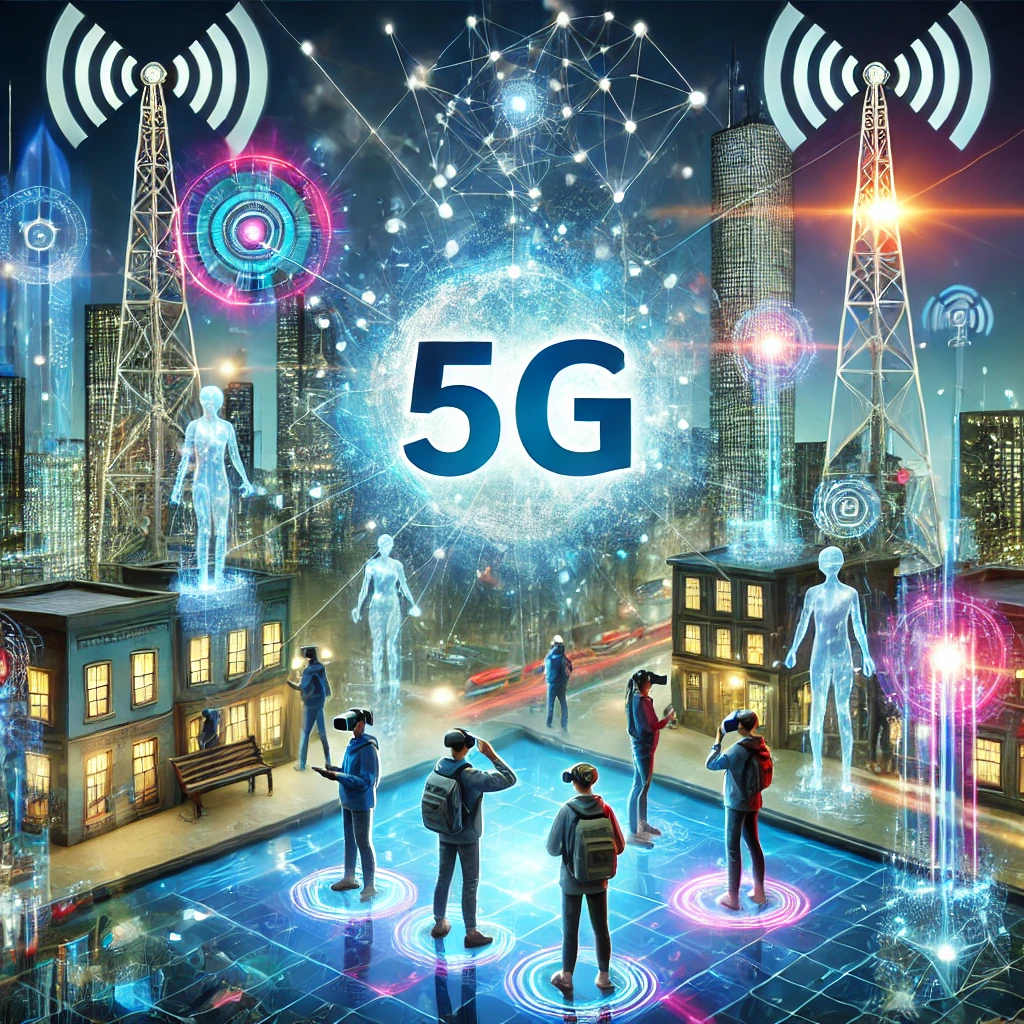
The Impact of 5G on Augmented and Virtual Reality: A Technological Revolution
Introduction: The Power of 5G in AR and VR
Imagine a world where augmented and virtual reality (AR and VR) are no longer just futuristic concepts, but integral parts of our daily lives. Thanks to the latest advancements in 5G connectivity, this dream is fast becoming a reality. In this article, we will explore how 5G is transforming the AR and VR landscapes, while also diving into the innovations in AI, smart homes, and sustainable technology.
What is 5G and How Does It Work?
Before we dive into its impact on AR and VR, let’s first understand what 5G is. 5G is the fifth generation of mobile network technology, designed to be faster, more reliable, and capable of handling far more data than its predecessors. It’s the backbone of the connected world, enabling lightning-fast speeds, minimal latency, and enhanced connectivity that are essential for immersive technologies like AR and VR.
The Latest Innovations in AI and Their Real-Life Applications
The impact of AI on AR and VR is profound. AI helps create more realistic virtual environments and enhances the interactivity of augmented reality experiences. From facial recognition to intelligent object tracking, AI plays a significant role in making VR worlds more lifelike. With the support of 5G, AI algorithms can process data faster, enabling real-time adjustments to the virtual environment, making the experience smoother and more engaging.
AI-Powered AR and VR: Real-Life Uses
AI is making its mark in real-life applications through AR and VR. In healthcare, surgeons use VR simulations powered by AI to practice procedures, improving precision and patient outcomes. In education, AR applications bring subjects to life by overlaying interactive visuals on textbooks, creating an immersive learning experience.
Best Smart Home Gadgets to Simplify Your Life
With 5G paving the way for faster connectivity, smart home technologies are becoming more efficient and powerful. Imagine controlling your lights, security systems, and even your refrigerator with a single voice command or app. 5G enables these devices to communicate faster and more effectively, improving convenience and energy efficiency. Smart home gadgets are no longer limited to basic functions – they’re becoming more intuitive, personalized, and responsive.
How 5G Powers Smart Homes
The combination of 5G and IoT (Internet of Things) in smart homes allows devices to communicate in real time, making your home smarter and more efficient. Whether it’s adjusting the temperature or monitoring your home security, 5G ensures that everything runs seamlessly, creating a truly connected living space.
How IoT is Revolutionizing Industries
IoT, powered by 5G, is transforming industries across the board. From manufacturing to agriculture, the ability to gather and process data in real-time is enhancing efficiency and productivity. For example, in agriculture, IoT sensors collect data on soil moisture and temperature, enabling farmers to make data-driven decisions, while in manufacturing, IoT-connected machines monitor and adjust production processes to minimize downtime.
The Future of IoT and 5G in Industry
The future of IoT, with the power of 5G, is incredibly exciting. Industries will benefit from reduced latency and faster data processing, leading to smarter factories, better supply chain management, and more efficient healthcare systems. Real-time data is at the heart of this transformation, and 5G is the key to unlocking its full potential.
Top 5G-Enabled Devices You Need to Know About
As 5G networks continue to roll out, many devices are now available that take full advantage of this cutting-edge technology. From smartphones to gaming consoles, these 5G-enabled devices are set to revolutionize how we work, play, and interact with the world. Some of the most notable 5G-enabled devices include:
- 5G Smartphones: Faster download speeds and smoother streaming experiences.
- 5G Smartwatches: Real-time health monitoring and seamless connectivity.
- 5G Laptops: Uninterrupted video calls and ultra-fast internet speeds.
Practical Uses of Sustainable Technologies in Everyday Life
Sustainability is at the forefront of technology innovation. Thanks to 5G, sustainable technologies are becoming more efficient, making it easier for individuals to incorporate them into their everyday lives. Whether it’s using energy-efficient smart appliances or adopting renewable energy sources, 5G helps optimize energy consumption and reduce carbon footprints.
Examples of Sustainable Technologies in Action
One example of sustainable technology enhanced by 5G is smart grids. These energy systems use 5G networks to monitor and distribute energy more effectively, reducing waste. In urban areas, 5G enables smart transportation systems, where real-time data helps reduce traffic congestion and lowers emissions.
5G and Its Impact on Connectivity
5G is a game-changer for connectivity, enabling faster and more reliable internet connections than ever before. With its ultra-low latency, 5G makes it possible for AR and VR applications to run smoothly without lag or interruptions, providing users with a truly immersive experience. This advancement is crucial for industries like gaming, healthcare, and entertainment, where speed and precision are essential.
How 5G Enhances AR and VR
For AR and VR to reach their full potential, seamless connectivity is key. With 5G’s lightning-fast speeds, users can experience real-time interactions in virtual environments, whether it’s in gaming or professional training. The low latency allows for realistic simulations, where actions in the virtual world happen almost instantly, creating a more engaging experience.
FAQs
- What is the difference between AR and VR? AR overlays digital information on the real world, while VR creates an entirely immersive virtual environment.
- How does 5G improve virtual reality? 5G’s high-speed data transmission and low latency enable smooth, real-time VR experiences without interruptions.
- Can 5G help make smart homes more efficient? Yes, 5G allows smart devices to communicate faster, making homes more responsive and energy-efficient.
- What are some examples of 5G-enabled devices? 5G-enabled smartphones, smartwatches, and laptops are among the top devices taking advantage of the 5G network.
- How can sustainable technologies benefit from 5G? 5G enhances the efficiency of sustainable technologies like smart grids and smart transportation, helping reduce energy consumption and emissions.